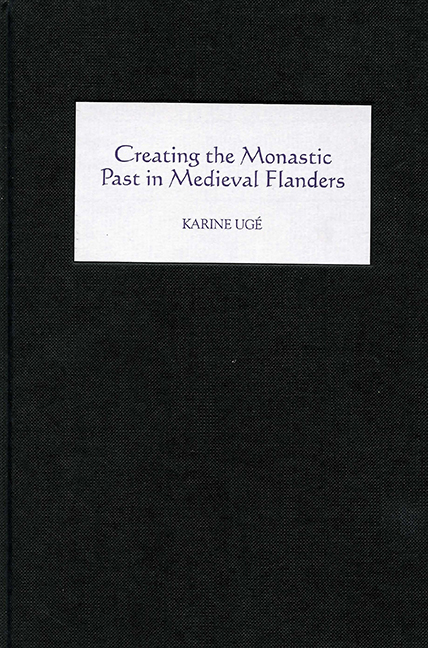Book contents
- Frontmatter
- Contents
- Acknowledgements
- Abbreviations
- Maps
- Genealogies
- Introduction
- Part I Saint-Bertin
- 1 Saint-Bertin from the Foundation to the Eleventh Century
- 2 Cultural Life at Saint-Bertin
- 3 Narrative Production at Saint-Bertin
- Part II The Hagiographic Cycle of St Rictrude
- Conclusion
- Bibliography
- Index
- Miscellaneous Endmatter
3 - Narrative Production at Saint-Bertin
from Part I - Saint-Bertin
Published online by Cambridge University Press: 12 September 2017
- Frontmatter
- Contents
- Acknowledgements
- Abbreviations
- Maps
- Genealogies
- Introduction
- Part I Saint-Bertin
- 1 Saint-Bertin from the Foundation to the Eleventh Century
- 2 Cultural Life at Saint-Bertin
- 3 Narrative Production at Saint-Bertin
- Part II The Hagiographic Cycle of St Rictrude
- Conclusion
- Bibliography
- Index
- Miscellaneous Endmatter
Summary
Introduction
This chapter explores, through a detailed examination of the main narratives produced at Saint-Bertin from the ninth to the eleventh century, how the community transformed its historical tradition, and especially its foundation story, in order to turn it into a tool of propaganda. I will focus on the content and method of redaction of the texts themselves as well as on the local political background which led to their composition. This will highlight the goals pursued by the authors, their biases and the role played by each text within the community. It appears that all these texts are related to a situation of crisis, to which they were meant to bring resolution. The first group of studied narratives is the hagiographic texts: the first and second lives of St Omer (VA1 and VA2) and St Bertin (VB1 and VB2). I will examine how, in the VA2 and VB2, the monks of Saint-Bertin transformed the foundation legend of Sithiu in order to assert their patron saint's prestige and their own supremacy over the two communities of Saint-Bertin and Saint-Omer. These new vitae are generally dated to the ninth century and are considered as a direct answer to Fridugis's division of the community. I will argue, however, that they date from the tenth century, and that the Benedictine restoration of 944 was the event which triggered the monks to rewrite their foundation story. The second text studied is the Gesta Abbatum Sithiensium written by Folcuin in 962. An examination of Folcuin's text and of the circumstances of its redaction reveals its two complementary purposes. Written in the aftermath of the Benedictine restoration, the Gesta closely follows and refines the new foundation story asserting St Bertin's supremacy at Sithiu. Furthermore, given the context of Count Arnulf's insistent intrusions into the community's life, the Gesta also meant to offer the community protection against exactions from lay powers. The third text, the Inventio Sancti Bertini, written by Abbot Bovo in 1052, relates Bovo's extraordinary discovery of St Bertin's relics. Unlike the second vitae of Omer and Bertin and the Gesta Abbatum, which were highly popular within the community and were often quoted and copied, the Inventio found no audience within the community.
- Type
- Chapter
- Information
- Creating the Monastic Past in Medieval Flanders , pp. 50 - 94Publisher: Boydell & BrewerPrint publication year: 2005

